Archive for the ‘cats’ Category
by Nancy E. Hassel, LIPetPlace.com
Long Island happens to be home to thousands of feral cats – and this winter has been a tough one for many colonies across LI. Many of these cats and kittens are cared daily for by devoted volunteers of rescue groups that try to help deter the problem by trapping them, spay and neutering them and re-releasing them back into the colony their were trapped at. This is also know as Trap-Neuter-Return or TNR. There are exceptions that some younger cats or kittens that are not quite as feral and can be rehabilitated back into living in a home, are giving the chance to be put up for adoption.
Some may wonder where do all these cats come from? Why do we have such a problem with feral cats across our Island? Some contributing factors are people have the false information that cats can fend for themselves and dump cats they no longer want, or were not supposed to own if they were living in an apartment complex or college dormitory. Domesticated cats do not do well when abandoned, and many die from getting diseases that they were not exposed to before, get hit by cars or attacked by other animals. Other factors are people that have or live near a colony of feral cats and just feed them and never ask for help to have them spayed or neutered or know about rescue groups that offer low cost spay and neutering – and as nature would have it, kittens keep coming. I personally remember one house in Lindenhurst while taking my niece and nephew trick or treating a few years ago, there had to be at least 50 cats and kittens living around this house. The word was the owner of the house was feeding the cats continually but not doing anything about the overpopulation. This was in a neighborhood of close quarters and those cats were all over the neighborhood. It was quite sad as the cats were very feral.
Interestingly many of our college campuses have a feral cat problem as well. Stony Brook University actually has a program called SBU Cat Network in which faculty and students volunteer in to help the cats living on the University’s campus. In 2002, Associate Professor of Psychology, Dr. Nancy Franklin founded the program based on Stamford University’s model on how college campuses deal with feral cat colonies. The SBU, is solely dedicated to helping the cats on their campus, and is not an animal shelter. They do offer advice to people and other rescue groups about feral cats, but say that Stony Brook is not a dumping ground for cats, and they cannot take in unwanted cats.
Since the inception of SBU, they have rescued about 350 cats in which half were placed in homes and half were trapped, spay or neutered and released back to their colony. The campus currently has about 30 colonies on the grounds and each colony has an insulated shelter the cats can go into for warmth and to get away from inclement weather. The volunteer students and faculty feed the feral cats 365 days a year and also participate in fundraising for the group and TNR. And as with many other rescue groups raising funds is a challenge in this economy and our currently running in the Shelter Challenge.
Many of the cats that end up as part of a feral colony on the campus are a direct result of some students keep them illegally in dorms and then letting them go when the year is over. As part of the SBU Cat Project outreach, student volunteers do try to educate other students that dumping cats on campus is neither acceptable nor humane – and let them know they are not allowed to keep pets on campus. There are about 25 very active student volunteers in the program, 10 faculty volunteers and many other volunteers throughout the campus. Franklin said, “The University has been very gracious to us while we have been running this program and our volunteer students and faculty members have been wonderful.”
Another organization which serves the towns of Riverhead and Southold is SAVES (Spay, Alter, Vaccinate, Every Stray) a 501 c 3 all volunteer non for profit organization. Like SBU they have no shelter to house cats or kittens, but do have limited foster homes for feral cats that are suitable for homes (that become domesticated). SAVES main focus is TNR, care for the feral cat colonies in both towns – in which there are approximately 40 colonies with a total of about 500 cats. SAVES provides food, winterized shelters, medical attention (besides spaying and neutering) and have volunteers go to feed and check on the colonies daily.
The winterized shelters were originally provided by Shoreham Wading River High School, teacher Dave Driscoll, who and now is at Shoreham Wading River Middle School. Mr. Driscoll wants to work with SAVES to offer humane educational programs, and to help motivate the students to build new shelters. The winterized colonies are now built by a family of SAVES volunteers, but could use additional help in the building process. There are singular shelters and multiple cat shelters made with openings sized for cats to go in and out of, but not big enough for raccoons to get it, the shelters are also up off the ground to help protect the cats from bad weather.
SAVES President Al LaFrance said, “We get about 40 phone calls a week from people who need help with feral cats on their property or looking to re-home cats. We help people living in our territory with TNR, but do not have the resources to help with re-homing.”
SAVES has been going to Kent Animal Shelter for low cost spay and neuter for a while and in 2010 had about 250 spayed and neutered there and had approximately 600 cats spayed and neutered for the entire year about 96 of which were done for free by Helping Paw (a mobile unit) that came to Riverhead to help them. Others were spayed and neutered at the North Folk Animal Hospital and Mattituck Laurel Animal hospital – who they also go to for medical care for the cats.
Their main outlet for adoptions is at the Riverhead Petco in which they house cats and kittens available for adoption through SAVES. Volunteers go Petco 7-days a week 2-times a day to care for them and this past year they have adopted 177 cats. There is an application process that potential adopters must fill out and be approved, as SAVES is looking for permanent homes for their cats with proper care. SAVES is opposed to de-clawing and adopts cats out that will live indoors only.
The focus for them for 2011 is to have more feral cats spayed and neutered by continuing with working with Kent Animal Shelter and their other veterinarian partners, and set up free clinics with Helping Paw. They also plan to offer more humane educations programs and presentations for schools, and boy and girl-scout groups.
So what can you do to help? If you see a feral cat colony that no one is caring for, i.e. no shelter provided, no food or water provided and kittens continually being born, contact a local animal rescue group to let them know about it. (See below for list). If you have feral cats, and are just feeding them, you are very well adding to the problem – reach out to the public animal rescues for help with feral cats in your yard, facility or business.
Another way you can help is by making a monetary donation or donate much needed cat food to help the cats make it through the winter. If you are a cat lover, think about fostering a kitten or two to help them find new homes. Feral cats can very well become the best cat you may ever have had-they don’t all stay in the feral state into which they were born into. I speak from personal experience, taking in a feral kitten from the age of 3-months, who lived a very spoiled 16-years and was a very sweet, smart, funny and dog adoring cat. And yes, her name was “Kitty!”
All About Spay and Neuter – A full service TNR 501 c 3 non-profit all volunteer organization that does 100% TNR servicing Brooklyn, Queens, Nassau and Suffolk. They are not a shelter but can be called for help if you have a feral cat problem in your area. They do about 90 TNR’s a month and since their inception in 2004 have helped just over 5,100 feral cats of which about 850 have been adopted into loving homes.
Kent Animal Shelter – Has low cost spay and neuter.
SAVES Inc. – See above.
by Robyn Elman, President of In Home Pet Services, Inc.
What do Pet Sitters do in a Blizzard?
This has been a rough winter so far with two big storms a rain and ice storm and more snow forecasted to hit our area again. They mayor says to stay off the roads. The schools are all closed and kids get to stay home with their parents or people are away on vacations. So what is a pet sitter to do?
When pet sitters have clients that are away on vacation they, and more importantly their pets, are depending on the sitter to come for their care. Dogs like Sophie the beagle still has to go outside to do her business, get feed, fresh water, love and attention, and cats like Bella needs her daily medications, litter changed, etc.
Dedicated professional pet sitters go with shovels in their cars to each appointment, and if the roads are not plowed they take the train or bus; and if that fails – as in the last blizzard in New York when there was no public transportation – they walked! But pet owners who are hiring pet sitters should also take into consideration the following tips to ensure safety for their pets and their pet sitters:
If you are away during the winter and are relying on a pet sitter, you can make things safer for them, ensuring your pet can get their care.
- Have someone “pre-hired” to shovel in case it snows. Have them shovel your driveway with a path to the road as well as the sidewalk in front of the house, and a path to the door.
- Leave pet safe salt containers for the people shoveling your walk and driveways (with directions to only use that type of salt) – and leave an extra container or two inside incase the pet sitter needs to add additional salt to ice or snow.
- Always have the numbers to your power company and/or heating company displayed for the sitter to call if there is an outage.
- If there is a power outage, or no heat at your home, make sure you have arrangements with your pet sitter so that they can take the dog, cat or bird home with them to board in case of a no heat emergency.
- Extra leashes, collars, dog or cat carrier is great to have available in case the sitter does have to take the pet with them.
- Have the number to the nearest 24-hour vet emergency hospital displayed as well.
- Keep a shovel handy for your sitter to maintain the paths.
- If you have a regularly scheduled dog walker and you are staying home from work – remember to call them to cancel.
- Make sure you have enough pet food, litter, pet medication and bottled water in case you’re stuck and can’t get back on your schedule day due to weather.
Pet Sitters and Dog Walkers truly work through rain, and snow, day and night. Planning ahead during the winter will make the care of your pet a little easier for your sitter to stay safe while caring for your pet. The tips above will make a big difference in the life of your pet and pet sitter during another blizzard.
by Nancy E. Hassel, LIPetPlace.com
Don’t forget the Pets!
With barely a day left to shop for Christmas, don’t forget gifts for the pets or pet lovers in your life. Going to a Holiday party to someone’s house that has a cat, dog or bird? Instead of the dreaded fruitcake or another needless dessert, bring the hostess a gift that is for their pet. Giving a pet owner a fabulous pet product for their beloved pet will go a long way, they will remember that probably more than another sweater! So with that said, here are some suggestions for you to go out and get today for that pet owner you have absolutely no idea what to get.
If you know what their favorite local pet store is or who their groomer is – why not get them a gift certificate. Or if you know they will appreciate a donation made in their name to a local non-for-profit animal rescue, you will be giving more than one present that way. Some great pet non-for-profits here on Long Island are:
Amaryllis Horse Farm; Kent Animal Shelter; Long Island Parrot Society; Long Island Dog Owners Group; Pet Safe Coalition; Shelter Link; The Shelter Connection and one close to my heart is, Special Needs Dobermans, not based on LI, but have helped many Dobermans on our Island over the years.
Did a loved one adopt a new dog or puppy recently? Maybe that pup needs some training, or in most cases the owners need the training – get them a gift certificate for a dog trainer or dog training school to help them with their new dog. Long Island is lucky to have some fantastic trainers, so really there is no excuse for a bad dog owner! You can also let them know about a free dog training and education class the Town of Islip offers once a month to all residents on LI.
Some fail safe pet products that any pet owner will love are: Organic or holistic treats for their dog, cat or bird. A new pet bed – try to find a bed that will match or compliment the owner’s house. Set up a photo session with a professional pet photographer to capture precious moments of one’s pets. Or frame a picture you have taken of their pet in a beautiful frame that they will be proud to display. Quality products that are a must have for any dog owner are:
The Furminator is a great product for de-shedding your pet, keeping his coat healthy and tangle free – especially in between a grooming appointment. Furminator also has a new short hair deshedder which is designed for dogs with hair length of 2-inches or shorter. Works great on my Pit Bull, and he loves, loves, loves to be “furminated.” The Kong toy is a classic for any dog owner. The Kong comes in different sizes and toughness based on the chew power of your dog or puppy. It is a wonderful product to keep your dog active, mentally stimulated and busy. Both products can be easily found at local pet shops. Or if you have a dog walker or trainer you are looking to get a great gift for, check out this reflective cap made by WalkMeWear™ for anyone out walking their dog in low or no light.
Don’t forget to shop at smaller pet mom & pop type pet stores you will get much better customer service, better prices and have knowledgeable staff and/or owners at the store to help guide you. Pets are our family members, and while they may not “know” it’s the Holiday’s, they do know when they are getting something just for them! So don’t forget the pet owners in your life and get them a nice gift for their beloved pet. Happy Holidays!
When we think of Morton’s salt we usually think of seasoning our food with it. But this year they have a new product just for pets Morton’s Safe-T-Pet™ which is a safe non-toxic ice melt to de-ice the winter wonderland outside your door. Morton Salt, the brand consumers have trusted and welcomed into their homes for more than 100 years, has developed a full line of specialty ice melt blends and salt-free ice melt products to help make your winter season more manageable and less stressful for you and your pets. See below for some excellent tips for keeping your pets safe through the winter and be on the lookout for our upcoming photo contest where you can win an 8lb container, (and lots of other prizes), of Morton’s pet and people friendly ice melt.
Keeping Pets Safe This Winter
Walking in a winter wonderland can be hazardous for our four-legged friends. “The winter months can be a very dangerous and uncomfortable period for pets,” says Dr. Sharon Gwaltney-Brant, a veterinarian and board-certified toxicologist. With the help of Dr. Gwaltney-Brant, Morton Salt, Inc. provides a few tips for keeping your pets safe this snowy season:
- Remember Their Tags – Dogs may love to frolic in the snow, but they can easily lose their scent and become lost in all that white. More dogs go missing in the winter than any other season, so keep them on a leash and ensure they are always wearing an ID tag.
- Protect Those Paws – The salted sidewalks and streets are very hard on pets’ paws – but there is a solution. Morton® Safe-T-Pet™, developed with veterinarians, is a salt free and chloride free ice melter which melts below 15 degrees Fahrenheit. Its urea-based, organic formula is non-toxic and non-irritating to pet’s paws and stomachs. Some other ice melters on the market mislead consumers regarding how well the product melts and how safe the product is. For example, when testing was conducted by Michigan Technological University Keweenah Snow Research Center, the Safe Paw™ ice melt product did not melt snow and ice at sub-zero temperatures as claimed. Other brands claim to be pet-safe but actually contain chlorides which can be harmful to pets digestive systems if ingested and which can be painful or irritating to pets’ paws. So make sure you look for a chloride free melter from a company you can trust to validate claims and put safety first.
- Avoid Toxic Temptations – The sweet taste of antifreeze solution is attractive to pets, but is highly toxic even in the smallest amounts. Be sure to keep all chemicals sealed on a high shelf, away from your furry friends, and clean up spills as soon as they happen.
- Winter Weight, Be Gone – Just like humans, animals are less active in the winter and don’t burn as many calories. Keep your pets healthy by reducing their diet to avoid winter weight gain. Speak with your veterinarian about proper diets during “hibernation” season.
- Warm Home, Cold Floors – It is important to remember that although your home may be warm, there may still be drafty areas. Make sure your pets have something soft to sleep on (away from drafts) to protect them from the cold floor.
- Holiday Treats for Humans Only – When throwing those much anticipated holiday parties, be sure to keep all chocolate, macadamia nuts, alcohol and even mistletoe and holly berries out of reach. Although seemingly harmless –these can be dangerous if ingested by pets.
- Running Out, Be Back Soon – Do not leave your dog in a car during the winter months. This enclosed space freezes fast, so if you are running errands be sure to leave your pet at home in the warmth of your home or keep them by your side when out and about.
- Wipe Down To Stop Whining – In addition to selecting a pet-friendly ice melter, be sure to towel off your pet after time outside to remove salt and other irritants from their paws and skin. At the same time, inspect the paw pads for any collection of snow or ice to ward off winter weather problems.
By Nancy Hassel, LIPetPlace.com
No Place Like Home, Pet Product Showcase
Last Wednesday I had the pleasure of being invited to a media event for 25 of the most elite, beautifully designed and innovative pet products from companies across the US. This exclusive pet product showcase, No Place like Home, that took place in Manhattan was presented by Pet Socialite Events and hosted by the fabulous pet trend and lifestyle expert, Charlotte Reed. Among the press attending the event were various celebrities, most notably Richard Belzer and his dog BeBe an adorable poodle-fox terrier mix.

Richard Belzer & BeBe checking out products
There was also elaborately designed ‘pet bedroom suite’ to tour that was decorated to meet the needs of pets and their owners.
Some of the companies or manufacturers that were showcasing their products were: Furminator; Kyjen (Outward Hound); Sturdi Products; Luxury Pets; Bamboo; Hartz; Thunder Shirt; Premier; Designer Catbox; Unleashed Life; YepYup; Ecosmart; CitiKitty; R2 Solutions and more. One of the companies had a very unique product, nothing this pet professional has every seen before – agility for pet fish – I kid you not, more to come on this. This event was pretty crowded and filled with many pet press enthusiasts.

If you look closely to left low hand corner you might spot a certain NJ House wife holding her cat, Grandma Wrinkles.
After receiving many unexpected pet product freebies from the event, what else to do but put them to the ultimate test, product reviews from my dog Max. Over the next few weeks, we will be rating the products based on Max’s liking, how the product holds up, quality and more. So be sure to look out for his reviews soon! The first product being reviewed is doing quite well, here’s a teaser picture of Max getting his first sniff:

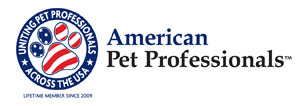
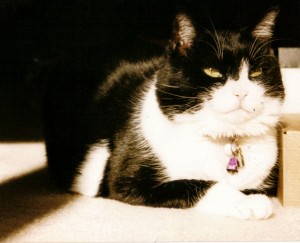



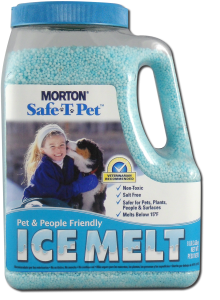
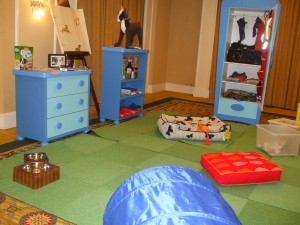
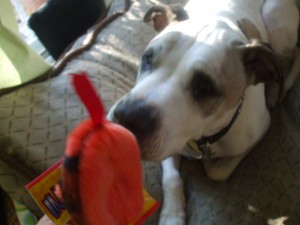
Categories
Archives
Blogroll
Meta